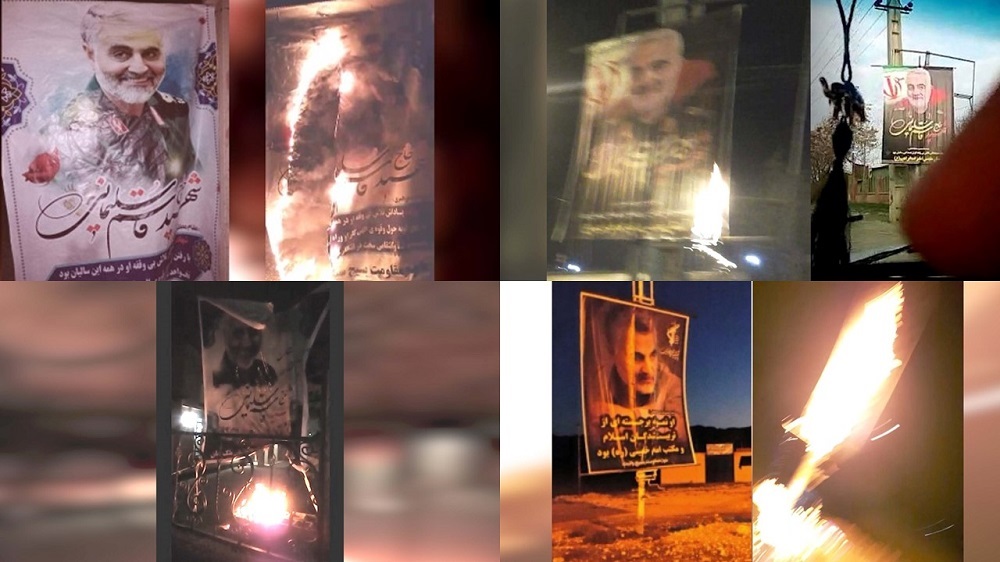
![protests, which specifically target Supreme Leader Ali Khamenei with slogans like "Death to Khamenei" and "Death to the oppressor, whether the Shah or the [supreme] leader", show that the Iranian people demand liberation from the regime. Since Saturday, the Iranian people have been rising up in protest after the regime eventually admitted to downing a passenger plane last week.](https://stopfundamentalism.com/wp-content/uploads/2019/December/Soleimani-Death-Is-Sign-of-Hope-for-Iranians.jpg)
By Armin Baldwin
Since Saturday, the Iranian people have been rising up in protest after the regime eventually admitted to downing a passenger plane last week. Their protests, which specifically target Supreme Leader Ali Khamenei with slogans like “Death to Khamenei” and “Death to the oppressor, whether the Shah or the [supreme] leader”, show that the Iranian people demand liberation from the regime.
There are numerous videos showing young protesters, especially women, destroying posters of the regime’s Quds Force commander pictures Qassem Soleimani, who was killed in a US drone strike on January 3. These defiant acts destroy the state’s propaganda surrounding Soleimani, which portrayed him as someone beloved by the people.
In fact, he was hated by Iranians for his role is suppressing their protests and especially his attacks on the Iranian dissident group, the People’s Mojahedin Organization of Iran (Mujahedin-e Khalq or PMOI/MEK).
Thomas Cantwell, a retired US Army officer who was assigned with a protection mission for the MEK in Iraq, wrote an op-ed for Townhall where he detailed the assaults.
He explained that Iraqi militias working on Soleimani’s orders had carried out a full-scale assault on the MEK at Camp Ashraf, where thousands of the dissidents lived in peace. In one attack in September 2013, 52 MEK members were killed.
Cantwell wrote: “[That] assault was one of the last in a list of 40 terrorist attacks on Camp Ashraf and the temporary MEK settlement at Camp Liberty, which were attributed to Soleimani. Between 2009 and 2016, the Quds Force was ultimately responsible for the killing in Iraq of at least 141 MEK members. Yet the overall community’s survival thwarted Tehran’s larger plan to strike a blow against the organized push for regime change in Iran.”
He further noted that when the MEK were moved to Camp Liberty in Iraq in 2015 for safety, the regime fired 80 missiles against them. When the MEK was moved to Albania in 2016, they were still the subject of terrorist plots, which were thankfully thwarted.
At the end of 2019, the MEK helped to organise the massive protests that sprang up in Iran over the increase of fuel costs. The regime launched a massive crackdown and killed 1,500 unarmed protesters.
Cantwell wrote: “Attacks against internal protestors and on the MEK and other Iranian dissidents will certainly continue. But Soleimani’s absence creates a new opening for those whose democratic ideals had incurred his wrath in the past… For 25 years, Soleimani was the leading figure pursuing Tehran’s ominous objective at home and in the region. Although his funeral was widely televised in western media, the public rejoicing across Iran, Iraq, Lebanon, and the public displays of hatred toward his portraits during recent protests, is a more reliable signal that the ayatollahs’ demise looms on the horizon.”







